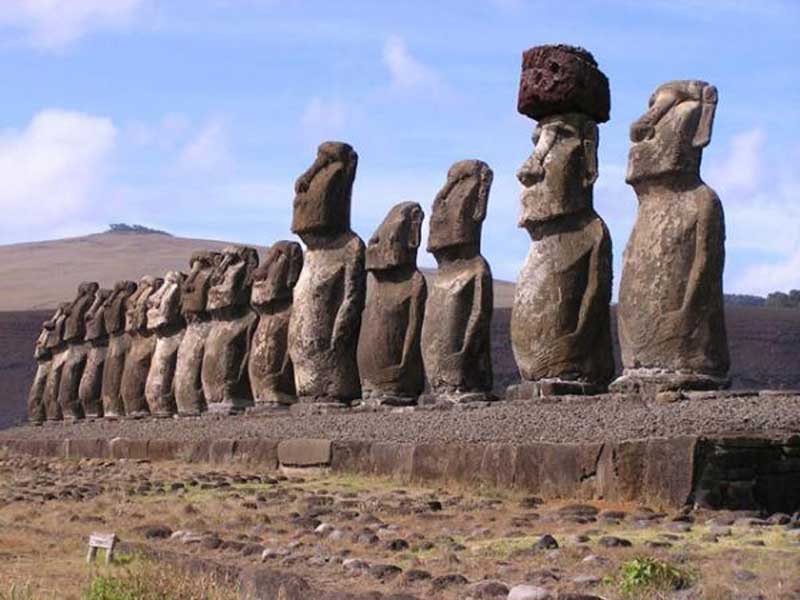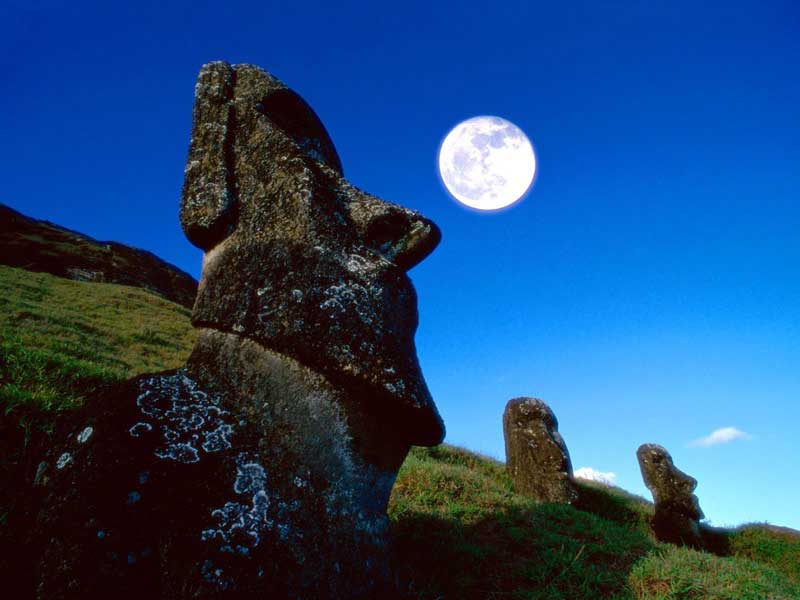
Located in the wide wilderness of the southeastern Pacific Ocean, the Easter Island is one of the most remote inhabited islands on Earth. The Polynesian island, also known as Rapa Nui or Isla de Pascua, is famous for its monstrous, carved stone statues, called moai, created by the Rapa Nui, the aboriginal Polynesian inhabitants of the island, believed to have settled Easter Island between 300 and 1200 AD. According to local legend, long ago, a man named Hotu Matu’a was the first to arrive on the island, sailing in on a big canoe with his wife and a few companions.
However, there is no documentary evidence to verify the anecdote. History says, while searching for Davis Land, a Dutch explorer Jacob Roggeveen located the island on 5 April 1722 and as it was Easter Sunday, he named the island as Paasch-Eyland, which stands for Easter Island in the 18th century Dutch Language. However, the official Spanish name of the island is Isla de Pascua, also means Easter Island.

The huge monolithic stone figures carved by the Rapa Nui people on Easter Island between the years 1250 and 1500, have beguiled explorers, researchers and the wider world for centuries. During the first visit of the Europeans in 1722, the statues stood gazing toward inland across their clan lands. However, they were toppled in the late 18th and early 19th centuries, possibly because of European contact or internecine tribal wars.
Almost all the moai have overly large heads three-eighths the size of the whole statue. Initially, it was presumed that, the statues were merely heads, but after excavation, it was found that almost all the heads have bodies. The tallest Moai, called Paro, was almost 33 feet (10m) high and weighed 82 tonnes and was moved over 5 km from its source at Rano Raruku. Surprisingly, very few statues were actually transported from there and installed on stone platforms called Ahu, around the island’s perimeter.

There are at least a thousand moai scattered across the island and many more remain buried underground. The 15 moai at a site called Tongariki are perhaps the most famous. Like strange speechless sentries, they have stood for ages, facing away from the sea, while watching over the land and its people. Some of the statues have topknots, look like hats, on their heads, locally known as ‘Pukao’, made from a quarried red volcanic stone. Possibly, these are actually later additions to the statues, possibly as late as the 16th century.

A completed moai consists of three parts, which include a large yellow body, a red hat or topknot called pukao, and white inset eyes with a coral iris. The main bodies of most of the moai statues were sculpted out of the volcanic ash from the Rano Raruku quarry, an extinct volcano. It appears that most of the bodies were carved lying on their backs and after the completion of the job, they were detached from the rock bed.
After that, the moai were erected vertically, when their backs were dressed. Finally, the statues moved out of the Quarry along a network of roads to prepared platforms, called ahu, all over the island. The floors of the roads were originally concave and were bounded by curbstones. Around 60 moai found along the roads are considered to be fallen during transit.

Nevertheless, how the Stone Age tribes of the island could manage to transport those enormous moai along the hilly terrain, is a baffling question. It is maintained by many that, statues were placed on top of the logs and were forced to roll to their destinations. Eventually, the need for more and more logs resulted in deforestation of all the thick and straight trees of the island, which was once a tropical paradise hosting lush forests. In other words, caught in a moai-building frenzy, Easter Islanders ravaged and plundered the island's forests without thinking about their future. In the absence of trees, the birds of the island became extinct. Added to it, without lumber for making canoes, the Islanders could no longer hunt for the big fishes. Consequently, it is not impossible that the once-thriving residents of Easter Island were ultimately forced to resort to cannibalism.

However, others argue that land clearing for cultivation and the introduction of the Polynesian rat resulted to the gradual deforestation. Interestingly, recent practical experiments proved that, it is fully possible that the moai were literally walked from their quarries to their final positions by ingenious use of ropes and man power. In every possibility, bands of workers were engaged to rock the moai back and forth, creating the walking motion and holding the moai upright.

Despite everything, the huge ancient statues are still an enigma for the historians and archaeologists. Nobody is sure as to why those huge monolithic statues were built, what they signified, whether they were part of the ancestral worship of the island’s settlers, how they were erected and transported and why many of them were abandoned unfinished. Apart from that, till date, nobody could decipher the hieroglyphic writings found on some of the statues.
Today, much of the island is protected within the Rapa Nui National Park and the island was enlisted in the World Heritage Site of UNESCO in 1995.